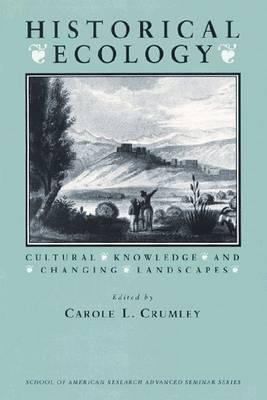

 |

|

The average rating for Historical ecology based on 2 reviews is 4 stars.
Review # 1 was written on 2011-11-12 00:00:00 Jay Williams Jay WilliamsHighly recommended! All ecologists should read this book! |
Review # 2 was written on 2013-02-01 00:00:00 Karen Monegatto Karen MonegattoReview (Concerns the second edition of the book) Fire: A Brief History - Enlightening but somewhat Verbose (3 out of 5) Introduction & Summary «Only humanity has become, for the biosphere, the keeper of the vital flame. Fire's story is a story of the Earth and, as myths emphatically insist, a story of ourselves.» These two sentences that can be found in the introduction of the book Fire: A Brief History by Stephen Pyne, in my opinion, sums the book up quite well. After the early chapters about the «early» fire history that predates the arrival of early humans come to a conclusion, the history of fire continues mainly as a history of humanity. A story of ourselves. This book gives an overview of all the things touched by fire in the world, and, vice versa, the things in the world that have an impact on fire. It describes how fire, «fast combustion», is a feature unique to earth. How the arrival of multi-cellular organisms, together with the outflow of oxygen into the air, fueled by photosynthesis, enabled the first flame to come into existence. How early humans first learned to tend fire and later how to actively kindle it, the beginning of «second fire», as Stephen Pyne calls it. The history of this «second fire» takes up a large part of the book. Aboriginal fire, the arrival of swidden farming, fire-foraging, fire’s role in european colonialism are described in varying geographic locations. In the latter part of the book with the arrival of industrialization comes «third fire». A fire that can be found in stoves, iron furnaces, mining huts. Yet, third fire also moves cars, airplanes and water pumps that help to combat third fire’s biggest rival: Second fire. This distinction between first (natural fire), second (anthropogenic open fire) and third (industrial) fire is an interesting take to describe these rivalling types of fire. Yet, it was a little confusing at first to grasp what exactly the differences between them were, as the author never really defined them clearly early on. Only as the pages progressed became it clearer to me what each of the three fires actually meant. The Bad This also leads me to the first problem with the book: Stephen Pyne touches on a lot of different subjects but always stays quite abstract and rarely explains the intricacies of how the different points of the fire triangle actually interact with one another in the field. How do the different fuel types actually matter, why does the flame actually promote growth of certain vegetation, how does fire-foraging really work, and so on. It can, thus, be a bit challenging for a layman like me to understand what the author is actually going on about, especially when he drifts off into his more verbose, poetic style of writing. Which brings me to his writing style. He often goes off into a certain wordy style to describe fire’s history which, ultimately, is a matter of taste but it makes it harder for the reader to follow. He also rarely stays on the topic of his chapters and often touches on topics from other parts of the book, which can make the text feel loose, and often also a bit repetitive. The Good Next to his knowledge about fire, the author shows that he is also well versed in sciences like biology, geography and history. He shows how these areas of study are connected to fire but he doesn’t swerve too deeply into other topics and keeps the main focus of the book on fire’s history. The book has taught me a lot of new ways on how fire can shape enviromnents and how human presence is tied to fire. Stephen Pyne uncovers that fire has deeply influenced a lot of what we know today and shows connections that usually evade the common mindset when thinking about fire. These revelations about fire’s role are quite enlightening, even the more ceremonial ones like the connection from the hearth of aboriginal people to the TV of modern societies. Conclusion In conclusion, I would recommend this book to those that have an interest in fire and want to learn more about its role in history, or to people with a background in history that want to know more about how fire has permeated particularly human history. |
CAN'T FIND WHAT YOU'RE LOOKING FOR? CLICK HERE!!!